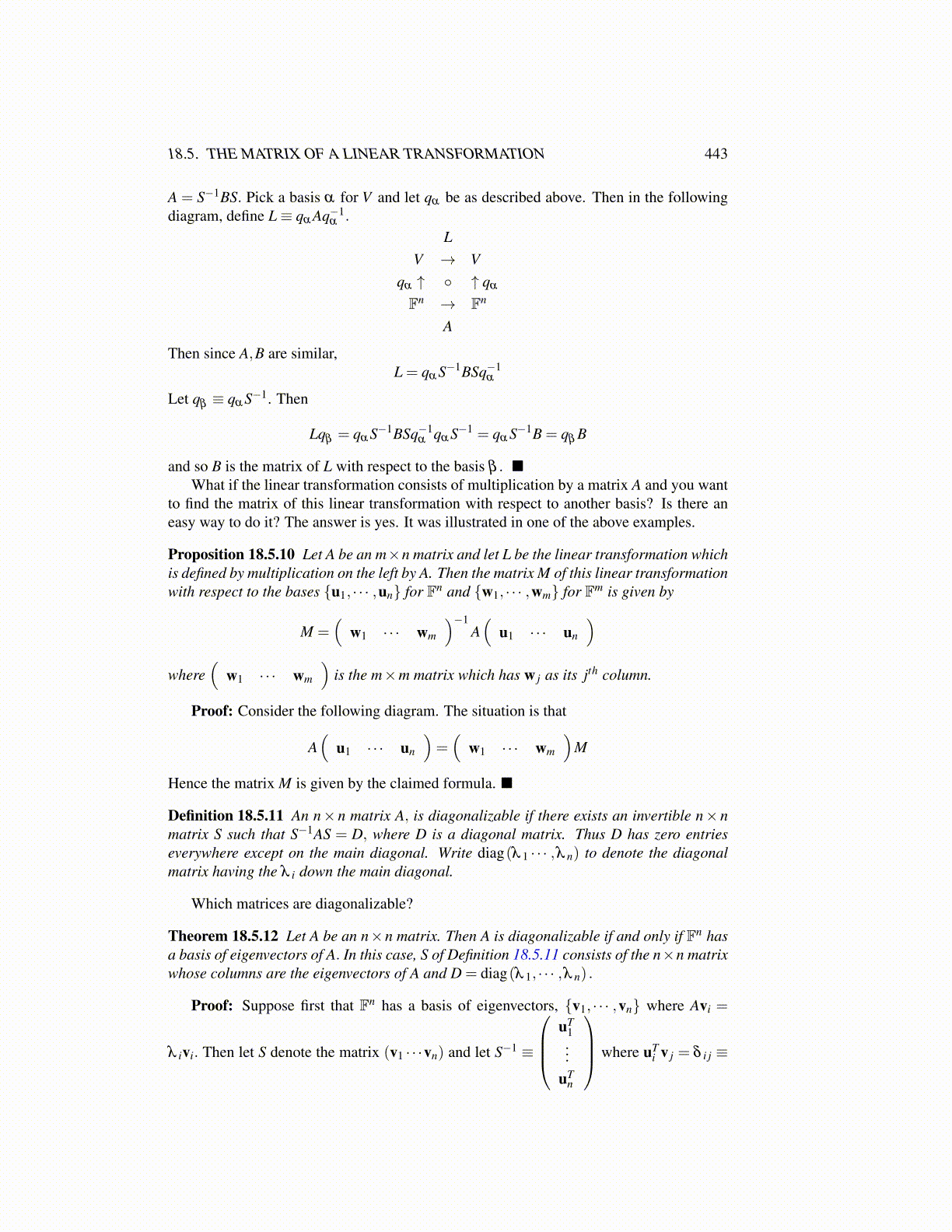
18.5. THE MATRIX OF A LINEAR TRANSFORMATION 443
A = S−1BS. Pick a basis α for V and let qα be as described above. Then in the followingdiagram, define L≡ qα Aq−1
α .
LV → V
qα ↑ ◦ ↑ qα
Fn → Fn
A
Then since A,B are similar,L = qα S−1BSq−1
α
Let qβ ≡ qα S−1. Then
Lqβ = qα S−1BSq−1α qα S−1 = qα S−1B = qβ B
and so B is the matrix of L with respect to the basis β . ■What if the linear transformation consists of multiplication by a matrix A and you want
to find the matrix of this linear transformation with respect to another basis? Is there aneasy way to do it? The answer is yes. It was illustrated in one of the above examples.
Proposition 18.5.10 Let A be an m×n matrix and let L be the linear transformation whichis defined by multiplication on the left by A. Then the matrix M of this linear transformationwith respect to the bases {u1, · · · ,un} for Fn and {w1, · · · ,wm} for Fm is given by
M =(
w1 · · · wm
)−1A(
u1 · · · un
)where
(w1 · · · wm
)is the m×m matrix which has w j as its jth column.
Proof: Consider the following diagram. The situation is that
A(
u1 · · · un
)=(
w1 · · · wm
)M
Hence the matrix M is given by the claimed formula. ■
Definition 18.5.11 An n× n matrix A, is diagonalizable if there exists an invertible n× nmatrix S such that S−1AS = D, where D is a diagonal matrix. Thus D has zero entrieseverywhere except on the main diagonal. Write diag(λ 1 · · · ,λ n) to denote the diagonalmatrix having the λ i down the main diagonal.
Which matrices are diagonalizable?
Theorem 18.5.12 Let A be an n×n matrix. Then A is diagonalizable if and only if Fn hasa basis of eigenvectors of A. In this case, S of Definition 18.5.11 consists of the n×n matrixwhose columns are the eigenvectors of A and D = diag(λ 1, · · · ,λ n) .
Proof: Suppose first that Fn has a basis of eigenvectors, {v1, · · · ,vn} where Avi =
λ ivi. Then let S denote the matrix (v1 · · ·vn) and let S−1 ≡
uT
1...
uTn
where uTi v j = δ i j ≡